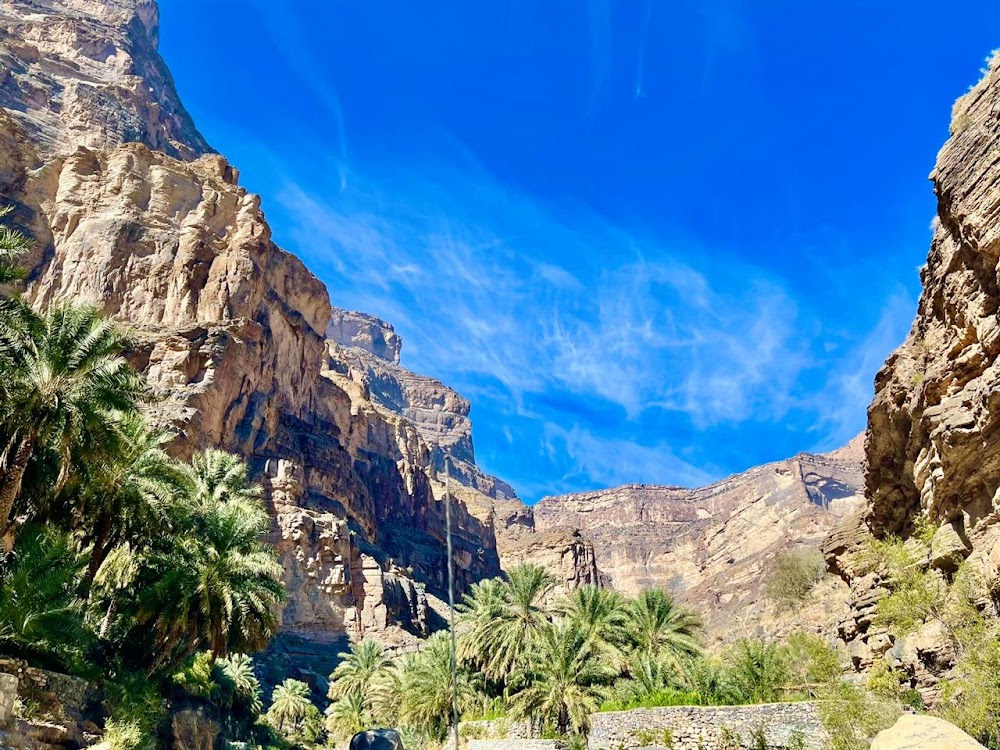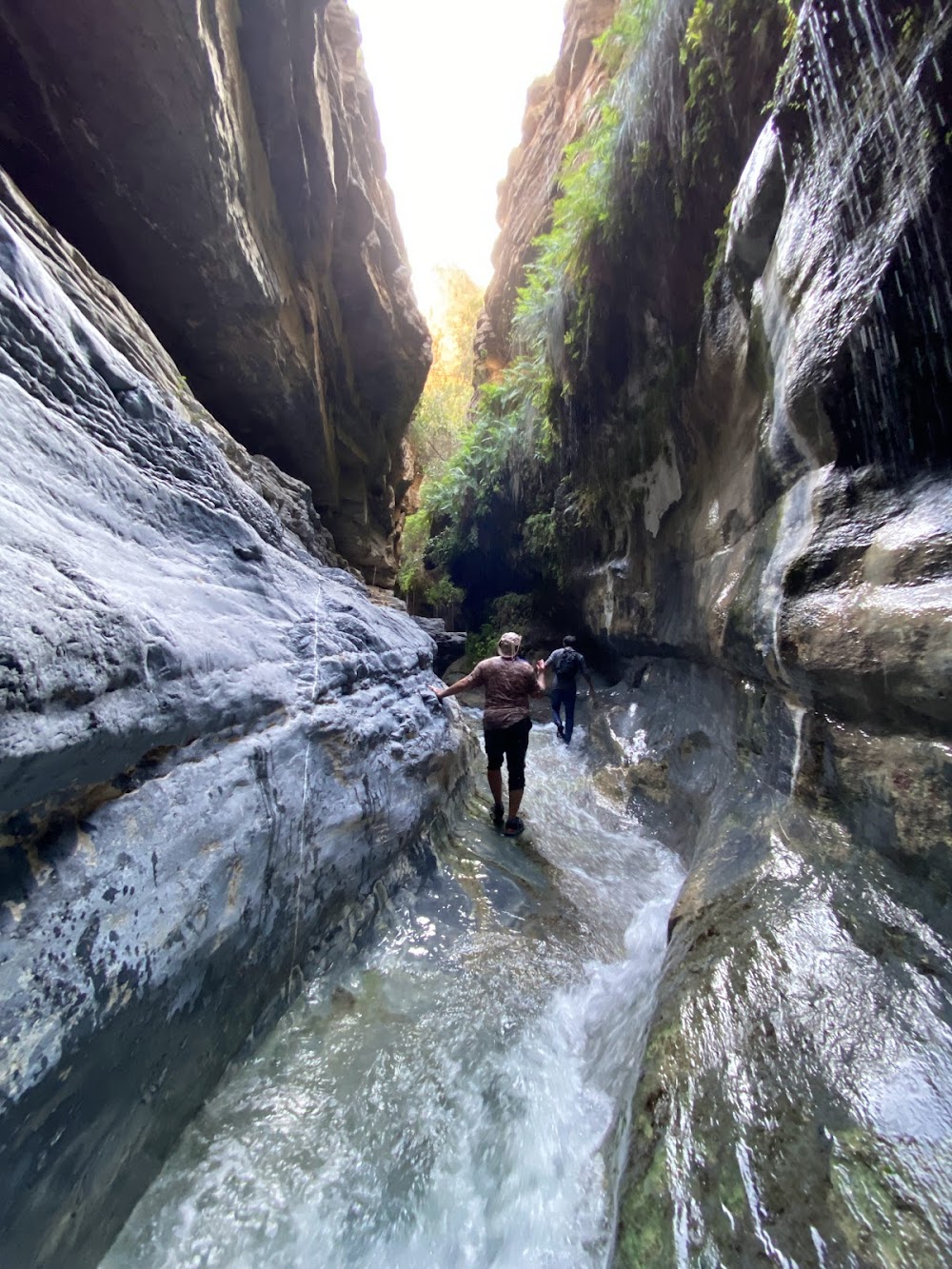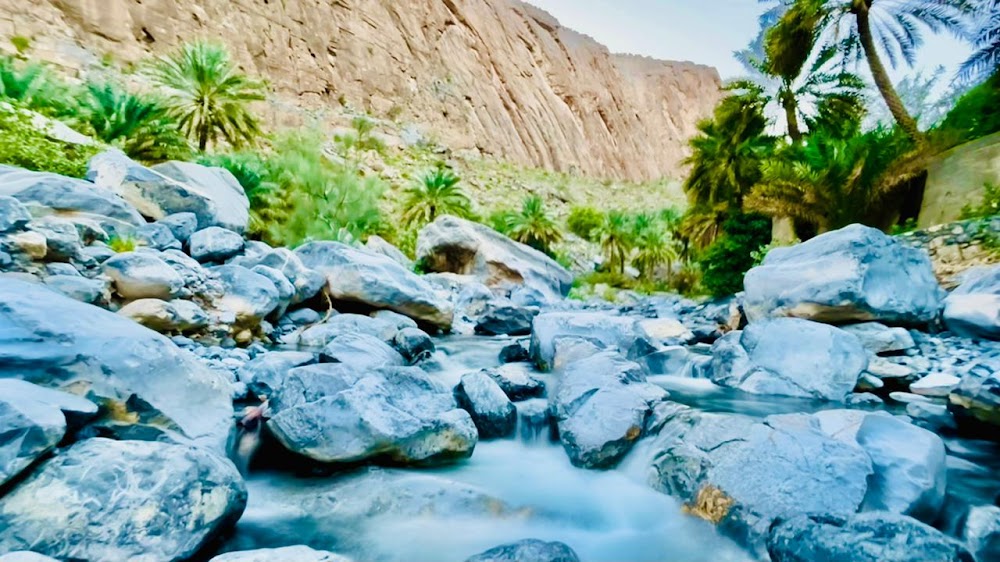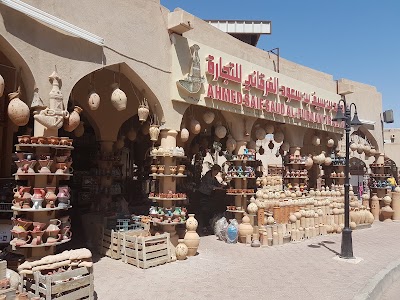Wadi Ghul (وادي غول)
Related Places
Overview
Wadi Ghul, often hailed as the **“Grand Canyon of Arabia,”** is an awe-inspiring geological wonder nestled in the Ad Dakhiliyah region of Oman. This breathtaking formation, shaped over millions of years by the relentless forces of erosion, stands as a testament to the incredible power of nature.
The story of Wadi Ghul begins with the **uplift of the Earth’s crust**, which gave rise to the towering Hajar Mountains. Over time, the persistent action of rainwater coupled with tectonic movements carved deep gorges into the limestone layers. Various climatic changes throughout history contributed to its current striking form, with periods of heavy rainfall dramatically widening the canyon and sculpting its towering cliffs and terraces.
Stretching for several kilometers and plunging to depths exceeding **1,000 meters**, Wadi Ghul boasts steep cliffs and jagged edges that offer breathtaking views, attracting adventurers and nature enthusiasts from around the globe. One of its most famous features is **Jebel Shams**, the highest peak in Oman, which provides an unparalleled vantage point overlooking the wadi.
Beyond its natural beauty, Wadi Ghul is a site rich in **cultural and historical significance**. Evidence suggests that this area has been inhabited for thousands of years, with ancient villages and traditional stone structures still visible within the wadi. These remnants highlight the resourcefulness of past inhabitants who thrived in this rugged landscape, employing traditional farming techniques like terrace farming to cultivate crops and sustain their communities.
In recent years, the **Omani government** has recognized the importance of promoting and preserving Wadi Ghul. Initiatives have been implemented to enhance infrastructure, including paved roads leading to the site, making it more accessible to tourists. Eco-tourism initiatives are also in place, aiming to protect the natural environment while allowing visitors to immerse themselves in its stunning beauty.
The **geological features** of Wadi Ghul are as captivating as its history. The various layers of limestone, shale, and sandstone narrate a story that spans hundreds of millions of years. Fossils embedded in the rock walls offer glimpses into ancient marine life that once thrived in the region, long before the land rose above sea level.
Another remarkable feature is the **Falaj irrigation system**, an ancient engineering marvel comprising underground tunnels that transport water from the mountains to the farms and villages below. This highly efficient system is so vital to the region that it has earned recognition as a UNESCO World Heritage site.
For those seeking adventure, **hiking and trekking** in Wadi Ghul are popular activities. The famous Balcony Walk trail hugs the canyon walls, offering awe-inspiring views and opportunities to observe perennial plants like wild figs and oleander. The rich biodiversity extends to wildlife as well, with sightings of mountain gazelles, foxes, and various bird species.
Wadi Ghul remains a premier destination for those eager to connect with nature, history, and the awe-inspiring forces of geology. Its towering cliffs, deep gorges, and ancient human artifacts create a unique and captivating site, continuing to share its ancient story with curious visitors from every corner of the globe.









